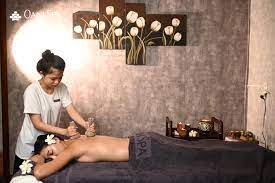
Massage has been an integral part of human culture for thousands of years, tracing its roots back to ancient civilizations in China, Egypt, and Greece. Today, it is not only a popular form of relaxation but also a therapeutic practice embraced by many for its numerous health benefits. This article explores the various types of 다낭 마사지, their historical significance, and the science behind their effectiveness in promoting physical and mental well-being.
A Brief History of Massage
The practice of massage can be traced back to as early as 3000 BCE, with references found in ancient texts such as the Huangdi Neijing, an important medical treatise in Chinese medicine. The ancient Egyptians used massage in conjunction with oils and ointments for therapeutic purposes, while the Greeks viewed it as a means of enhancing athletic performance. Hippocrates, known as the “Father of Medicine,” advocated for massage as a way to treat injuries and maintain health.
Throughout the centuries, massage techniques evolved and diversified. In Japan, Shiatsu developed, combining finger pressure and stretching to restore balance in the body. In Sweden, Swedish massage was popularized in the 19th century, focusing on long strokes and kneading to improve circulation and relieve muscle tension.
Types of Massage
There are numerous massage modalities, each with its unique techniques and purposes. Here are some of the most popular types:
- Swedish Massage: This is one of the most widely practiced forms of massage, known for its gentle techniques that promote relaxation. It typically involves long, flowing strokes, kneading, and circular movements on the muscles.
- Deep Tissue Massage: Targeting the deeper layers of muscle and connective tissue, deep tissue massage uses firmer pressure to relieve chronic tension and pain. It is particularly effective for individuals with injuries or ongoing discomfort.
- Sports Massage: Designed for athletes, this type of massage focuses on preventing and treating injuries, improving flexibility, and enhancing performance. Techniques may include stretching, deep tissue work, and trigger point therapy.
- Shiatsu: A traditional Japanese form of massage, Shiatsu utilizes finger pressure on specific points to balance the body’s energy, or “ki.” It aims to alleviate stress and promote overall wellness.
- Aromatherapy Massage: Combining the benefits of massage with the use of essential oils, aromatherapy massage aims to enhance relaxation and emotional well-being. Different oils are used for their therapeutic properties.
The Science Behind Massage
Numerous studies have highlighted the positive effects of massage on physical and mental health. Some of the key benefits include:
- Reduced Muscle Tension: Massage helps to relax tight muscles, improving flexibility and range of motion. It can also aid in recovery after strenuous physical activity.
- Improved Circulation: The techniques used in massage promote blood flow, which can enhance oxygen and nutrient delivery to tissues, supporting healing and recovery.
- Stress Reduction: Massage has been shown to lower levels of the stress hormone cortisol while increasing the production of serotonin and dopamine, neurotransmitters that promote feelings of happiness and well-being.
- Pain Relief: Many individuals find relief from chronic pain conditions, such as arthritis or lower back pain, through regular massage therapy. It can also help alleviate headaches and migraines.
- Enhanced Immune Function: Some studies suggest that regular massage may boost the immune system by increasing the activity of natural killer cells, which play a crucial role in defending the body against illness.
The Future of Massage Therapy
As awareness of the health benefits of massage continues to grow, so does the demand for skilled massage therapists. The industry is evolving with advancements in techniques, technology, and research. Integrative approaches that combine massage with other therapeutic modalities, such as acupuncture and physical therapy, are becoming increasingly popular.
Additionally, the rise of mobile massage services and wellness apps has made it easier for individuals to access therapeutic massage in the comfort of their homes. This trend reflects a broader societal shift towards prioritizing self-care and holistic wellness.
Conclusion
Massage is more than just a luxury; it is a powerful tool for promoting physical and mental well-being. With its rich history and a wide variety of techniques, massage continues to play a vital role in modern health practices. Whether seeking relief from pain, stress reduction, or simply a moment of relaxation, incorporating massage into one’s wellness routine can lead to a healthier and more balanced life. As we move forward, the continued exploration of this ancient practice promises to unveil even more benefits for our overall health and well-being.